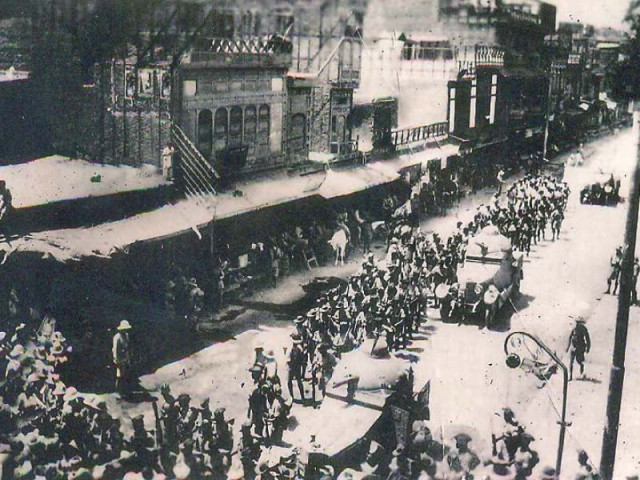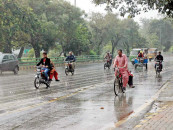After 86 years: Slain heroes of Qissa Khwani massacre remembered
Prayers offered for people who lost their lives in 1930 massacre in city

The bazaar before the attack on April 23, 1930. PHOTOS COURTESY: IBRAHIM ZIA
The British imperialists attacked and killed hundreds of unarmed civilians who had gathered in Qissa Khwani Bazaar on April 23, 1930.
Now, after 86 years, all those who had stepped into the storyteller’s market to protest against draconian laws, such as Frontier Crimes Regulations (FCR), and welcome the committee formed by the Congress to investigate discriminatory regulations in the province, remain forgotten.
Quaid-e-Azam House: Living history
Only a few people, mostly activists, traders, elders of the walled city and local historians, assembled at Yagar-e-Shaheedaan (memorial to the martyrs) in Qissa Khwani to remember the slain heroes and offered prayers for them. They also urged the government to commemorate the day at an official level.
Erasure
In the past, activists from political parties would gather at Yagar-e-Shaheedaan, monument constructed in the memory of the martyred and deliver speeches. However, this year, not a single political party member or government official came forward to remember the day and the people who lost their lives.
Gandhara Hindko Academy was the only entity that commemorated the day along with people who aim to preserve their native language, history and culture.
Speaking to The Express Tribune, Qissa Khwani Bazaar traders leader Sharafat Ali Mubarak said, “The brutal attack that took place on this day shows how brutally British imperialists ruled this land. We must honour the sacrifices of our elders who fought to free us from draconian laws.”
 After the attack on Qissa Khwani. (L)British troops in Peshawar Cantonment waiting for the orders to attack protesters in Qissa Khwani. (L)British troops pose before the attack. (R). PHOTOS: IBRAHIM ZIA
After the attack on Qissa Khwani. (L)British troops in Peshawar Cantonment waiting for the orders to attack protesters in Qissa Khwani. (L)British troops pose before the attack. (R). PHOTOS: IBRAHIM ZIAPakistan’s 6 UNESCO world heritage sites
Local historian Ibrahim Zia said, “The Qissa Khwani Bazaar tragedy was no less than the carnage that took place at Jallianwala Bagh massacre in Amritsar.”
He said notorious laws were enforced upon people of the province and severe punishments were meted out for the smallest of crimes.
Zia said the British did not allow the construction of a memorandum even after killing such a large number of innocent people.
“A few patricians built one but that was razed to the ground by the British,” he said, adding, “A trader Ashiq Hussain constructed another one but different political parties applied different colours to it.” Zia said finally Saeed Ahmad Jan who was elected mayor of Peshawar created one that is still intact.
Historical context
The British government was unable to tolerate the rising popularity of nationalist leaders like Khan Abdul Ghaffar Khan alias Bacha Khan who had aligned themselves with the Congress to fight for their liberation. It used punitive measures to subdue them in the region.
Bacha Khan launched a non-violent political movement called the Red Shirt movement, because of the colour of their shirts, which spread rapidly throughout the region and is also considered the largest peaceful movement in South Asia in the 20th century.
However, for the British, even the peaceful movement was unacceptable. The government refused to let them enter into the province and imposed section 144 under which no gathering was allowed.
On April 23, 1930, imperial soldiers opened fire on peaceful protesters in Qissa Khwani Bazaar brutally murdering hundreds of unarmed civilians. While the British acknowledged killing 179 people, Muslims, particularly those in the Khilafat Committee claimed at least 700 people had been killed.
Published in The Express Tribune, April 24th, 2016.
After the attack on Qissa Khwani.
British troops in Peshawar Cantonment waiting for the orders to attack protesters in Qissa Khwani.
British troops pose before the attack. Photos courtesy: Ibrahim Zia













COMMENTS
Comments are moderated and generally will be posted if they are on-topic and not abusive.
For more information, please see our Comments FAQ